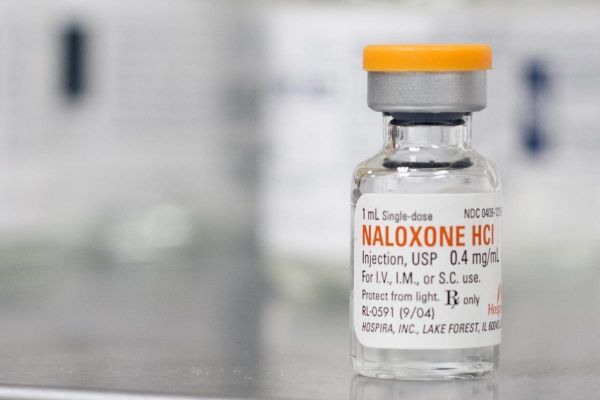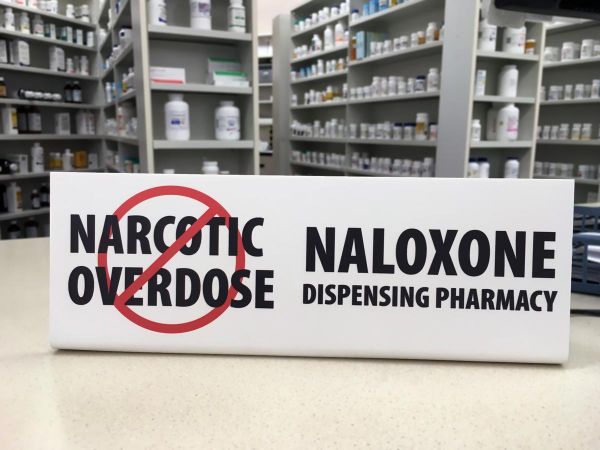 Naloxone is one of the most important medications available to someone with an opioid use disorder. In fact, it’s listed as an essential medication by the World Health Organization. Today, Naloxone maintains something of a mixed reputation. That’s because it’s a drug used to treat other drugs. It also has “opioid” in the name, which leads some people to think it functions like methadone, essentially, replacing one drug with another. That isn’t the case at all, even though there’s nothing wrong with methadone used according to a prescription.
Naloxone is one of the most important medications available to someone with an opioid use disorder. In fact, it’s listed as an essential medication by the World Health Organization. Today, Naloxone maintains something of a mixed reputation. That’s because it’s a drug used to treat other drugs. It also has “opioid” in the name, which leads some people to think it functions like methadone, essentially, replacing one drug with another. That isn’t the case at all, even though there’s nothing wrong with methadone used according to a prescription.
Understanding Naloxone can give you a better idea of what the drug does, how to use it, and whether or not you should be taking it or giving it to a loved one. Naloxone is normally used to prevent overdose – meaning that if you or a loved one has an opioid use problem, you’ve likely been offered the medication. Taking it and understanding what it does can help you to save someone’s life.
What is Naloxone?
Naloxone is an opioid antagonist, which means that it works by blocking the activation of opioid receptors. This allows it to function to pull people out of immediate opioid overdose. Naloxone achieves this by literally binding to and blocking the opioid receptors in the brain.
Opiate and opioid drugs like fentanyl and heroin function by binding to the opioid receptors in the brain. When they do, they impact the brain’s functions, including hormone and neurotransmitter production. Naloxone replaces the opioids in your system and forces the opioids to unbind. If someone is going through an overdose, a shot of naloxone can give them a temporary reprieve, which is enough time for most hospitals to arrive and administer longer-lasting medications or more Naloxone under a monitored setting.
That’s good in case of an overdose. However, it can be dangerous in case you aren’t overdosing. Why? It can push you into withdrawal, which can be dangerous. For example, individuals forced into sudden withdrawal can go into shock, can dehydrate, and can experience severe cardio and respiratory side-effects.
How is Naloxone Used?
Naloxone was first patented in 1961. But, it wasn’t approved for medical use until 1971. Here, it hit markets as Narcan and Evzio, which remain the two most popular brands of Naloxone on the market. In addition, Naloxone is available as a generic medication. However, it’s available in several different formats. The most common is an injection, which should be administered based on one of several types – namely into the fleshy part of the arm or thigh and into a muscle. The second option wasn’t approved by the FDA until 2020. This is a nasal inhaler, which should be sprayed into the nose. This is a stronger dose and also normally more difficult to get without contact with your doctor.
What is Naloxone Used For?
 Naloxone is administered in two primary uses. The first and primary is preventing or reducing the effects of a drug overdose. The second is administered with other “maintenance” drugs to prevent abusing or using them to get high. In both cases, Narcan is used in the same way, to prevent opioids from binding with the opioid receptors in the brain.
Naloxone is administered in two primary uses. The first and primary is preventing or reducing the effects of a drug overdose. The second is administered with other “maintenance” drugs to prevent abusing or using them to get high. In both cases, Narcan is used in the same way, to prevent opioids from binding with the opioid receptors in the brain.
Drug Overdose – Naloxone is considered to be the safest and most effective anti-overdose drug for opioids. The drug works quickly, often reviving patients in as little as 5 minutes, which can restore respiratory function in time to save someone’s life. In fact, it’s estimated that Naloxone has saved tens of thousands of lives since its approval in 1971. However, Naloxone isn’t a “cure” for drug overdose. Even if Naloxone completely draws someone out of the overdose, they can still lapse back in after the Naloxone wears off. That means it’s important to call emergency medical services or to get your loved on to the ER in another fashion. Naloxone normally lasts for about an hour (30 to 90 minutes depending on patient weight and metabolism) while opioids last for 12 or more hours. So, on average, someone needs 4+ hours of treatment and medical monitoring to move through an overdose safely with Naloxone. That means you have 30 minutes to get someone to the ER after giving them an Naloxone injection, or they become at risk of going back into overdose.
With Medication Assisted Treatment – Medications like Buprenorphine are used to treat opioid use disorder by switching patients to a safer, more manageable drug. When taken in oral form, Buprenorphine pills don’t get you high, which makes them a safe way to get treatment before going through withdrawal. Once you get treatment you can taper off the Buprenorphine. However, when crushed and injected, Buprenorphine causes a high and addiction. When combined with low doses of Naloxone, the Naloxone has no effect with an oral dose. However, if someone crushes and injects it, the Naloxone blocks the opioids. This “addiction prevention” strategy can still be dangerous, because it can force withdrawal. However, it’s sometimes seen as a better alternative to patients abusing their medication.
Naloxone Safety
Naloxone is one of the safest, if not the safest, drug in its class. It’s not addictive. In addition, there are few major side effects. However, Naloxone does cause physical dependence. Users will go through a short withdrawal phase when quitting it after buprenorphine/naloxone maintenance. However, with few side effects, and all milder than the methadone, most people don’t even notice.
In addition, Naloxone has no risk of overdose. Therefore, the largest risk of Naloxone is using it on someone with a strong chemical dependency to opioids using the drug. Without medical supervision, this could result in severe withdrawal symptoms.
Does Naloxone Have Side Effects?
Naloxone has minimum side effects including a slight risk of allergy. However, all side effects are relatively minor. Most align with sudden-onset withdrawal.
Naloxone is also an intramuscular injection. If you’ve had a vaccine, you know what that feels like. You also know that it comes with some pain and swelling at the injection site. In some cases, users may also pass out, usually because of sudden changes of blood pressure with onset withdrawal. Onset withdrawal also normally causes hot flashes, sweating, heart pounding, aches and pains, diarrhea, vomiting, stomach pain, and anxiety. These side effects can be considerable, especially for individuals who use a lot of opioids. However, they’re not very noticeable if someone is having an overdose.
Because an overdose is the only valid reason to take Naloxone on your own, the drug is safe and well worth the side effects.
Getting Naloxone
If you or a loved one is using opioids, getting Naloxone can be a good idea. The CDC reports that Naloxone reversed over 10,000 overdoses between 1996 and 2010. It’s saved thousands of lives. The drug is also cheap or free, easy to obtain, and something you can hand out to your loved one to help ensure they stay safe. In most states, you can walk into any Walgreens or CVS store and purchase the drug, without a prescription. You can also contact Narcan directly to request Naloxone.
In some areas, you might also have to ask your doctor. However, that effort is well-worth having a life-saving drug available.
If you want more information about Naloxone, opioid use disorder, or the drug rehab program offered at the Gooden Center, contact us for a free consultation.